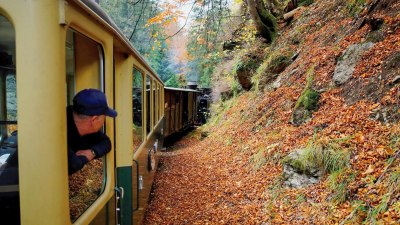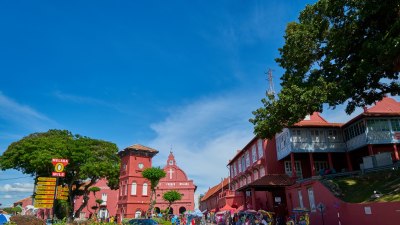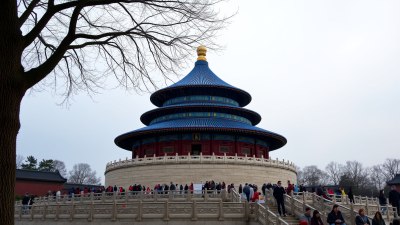Why Tiny Village Is Home to the World’s Oldest Traditions
Explore the fascinating reasons a tiny village is the keeper of the world's oldest traditions.

Nestled away from the hustle and bustle of modern life, a tiny village has managed to preserve traditions that date back centuries. This remarkable place, often overlooked by tourists, serves as a living museum of ancient customs, rituals, and lifestyles that have been passed down through generations. In a world that is rapidly globalizing, this village stands as a testament to the resilience of cultural heritage.
One of the primary reasons this village is home to such old traditions lies in its geographical location. Situated in a remote area, the village has remained somewhat insulated from external influences. This natural seclusion has allowed the community to maintain its unique practices without the pressures of modernization seen in more urbanized regions. The inhabitants have cultivated a way of life that is intimately connected to the land, with agriculture being the cornerstone of their daily existence.
The villagers have retained ancient farming techniques that have been adapted over centuries. For example, many of the agricultural methods date back to pre-industrial times, relying entirely on manual labor and organic practices. Crop rotation, natural pest control, and the use of heirloom seeds are common, ensuring the village's agricultural systems are sustainable. This approach not only preserves biodiversity but also fosters a deep respect for nature, which is integrally woven into the community's ethos.
Cultural Festivals as Living History
Cultural festivals in this village offer a vivid glimpse into its historical traditions. Each year, the community gathers to celebrate events that date back hundreds of years. These festivals are not merely celebrations but rather a reenactment of history. Traditional music, dance, and storytelling play a crucial role in these festivities. Elders share stories of their ancestors, recounting tales of bravery, love, and the struggles faced by previous generations.
The most notable festival is the harvest festival, an event that symbolizes gratitude and abundance. During this time, villagers dress in traditional attire, perform folk dances, and prepare age-old recipes using locally sourced ingredients. The community comes together to honor the earth and express their gratitude for the bounty it provides. The atmosphere is filled with joy, laughter, and a profound sense of belonging, reinforcing the ties that bind the villagers together.
Artisans Keeping Craft Alive
The village is also renowned for its artisans who specialize in traditional crafts. These skilled individuals uphold age-old techniques passed down through familial lines, creating everything from pottery to woven textiles. Their craftsmanship reflects the unique identity of the village and is a source of pride for its residents.
One can find artisans meticulously crafting pottery using traditional methods. The clay used is sourced from nearby mountains, and each piece is shaped by hand, with little to no reliance on machinery. These artisans are not merely creating products; they are telling stories through their work. Each design carries significance, often illustrating local legends or historical events.
Woven textiles, another celebrated craft, showcase the vibrant colors and patterns that embody the village’s heritage. The painstaking process of hand weaving is an art form in itself, requiring patience and skill. This method has remained largely unchanged, preserving the quality and uniqueness of each piece. Visitors often flood to the village seeking these crafts, ensuring that traditional methods not only survive but thrive in an ever-changing market.
Language and Oral Traditions
Language is another vital element in preserving the village’s oldest traditions. The community speaks a dialect that has its roots in ancient languages, serving as a living link to their past. The preservation of this language is paramount for the villagers, as it is embedded with phrases, idioms, and proverbs that contain wisdom and knowledge gathered over generations.
Oral tradition remains a cornerstone of cultural propagation in the village. Storytelling circles often form during winter evenings, where villagers gather around a fire to share tales that teach moral lessons and reflect on community values. These stories often highlight pivotal moments in the village's history, connecting younger generations with their ancestry and reinforcing community identity.
Spiritual Practices and Beliefs
The spiritual beliefs of the villagers are deeply intertwined with their traditions. Ancient rituals are performed to honor deities believed to safeguard the community, facilitate bountiful harvests, and ensure the well-being of its members. Many villagers engage in practices that have been carried out for centuries, demonstrating a profound connection to their spiritual heritage.
One striking aspect of these practices is the emphasis on nature. Spiritual ceremonies are often conducted in sacred spaces, such as groves or near wells, which are considered to be imbued with divine significance. Rituals may include offerings of food, songs, and dances that celebrate the elements and the land, reflecting a holistic worldview that sees humans as part of a larger ecological system.
The Role of Education
Education in the village uniquely intertwines traditional knowledge with contemporary learning. Although the village maintains its ancient customs, there is a growing recognition of the need to incorporate modern education systems. Schools in the community strive to blend secular subjects with local history, language, and traditions, ensuring the youth remain connected to their roots while preparing for the future.
This innovative educational approach not only cultivates a sense of pride among younger villagers but also encourages them to become custodians of their own heritage. Workshops where elders share their crafts and stories with children have become commonplace, providing hands-on learning experiences that bolster the community’s commitment to preserving its culture.
Challenges and Resilience
Despite its remarkable preservation of tradition, the village faces challenges from external pressures. Urbanization, climate change, and globalization pose risks to its customs. Many young villagers are drawn to cities, seeking better opportunities, which threatens the transmission of traditional knowledge. However, the village is resilient. Initiatives aimed at promoting sustainable tourism have emerged, allowing visitors to engage with the culture in meaningful ways while generating income for the community.
The villagers are collectively working to raise awareness about the importance of safeguarding their heritage. By becoming ambassadors of their traditions, they hope to inspire others to recognize the value of cultural preservation. This proactive approach ensures that the essence of the village’s identity remains intact despite the global tide of change.
A Beacon of Hope for Cultural Preservation
The tiny village, with its rich tapestry of traditions, serves as a beacon of hope for cultural preservation worldwide. Its ability to uphold customs rooted in history, while gracefully navigating the challenges of modernity, demonstrates the power of community resilience. The lessons learned from this village show that it is possible to thrive while honoring the past.
Ultimately, the story of this village is not just about the traditions themselves but about the people who live them. Their deep-seated belief in the importance of heritage and cultural identity fuels their commitment to preserving their way of life. By sharing their story, they invite the world to recognize the beauty of old traditions and the significance of nurturing them for future generations. As global citizens, it becomes our responsibility to respect and learn from such cultures that enrich the human experience.
Visiting this village is more than just a trip; it is a journey back in time, an immersion into a way of life that still celebrates the old while embracing the new. It stands as a reminder that in an ever-evolving world, the roots of our past are what help us grow into a more enriching future.











